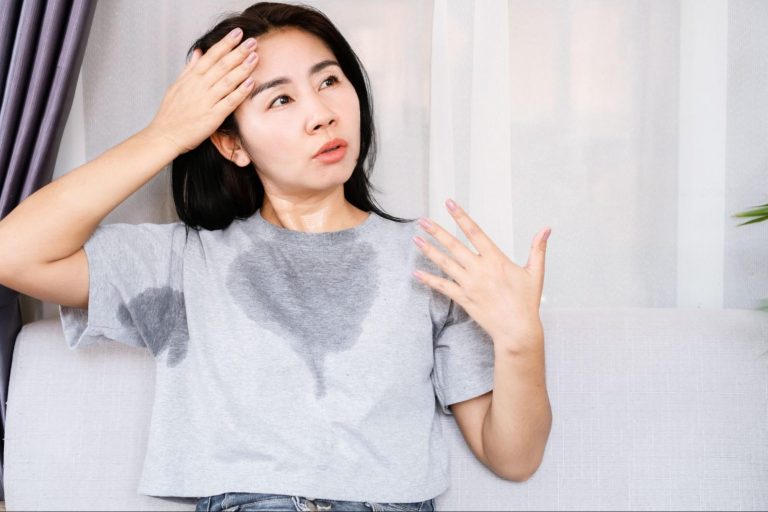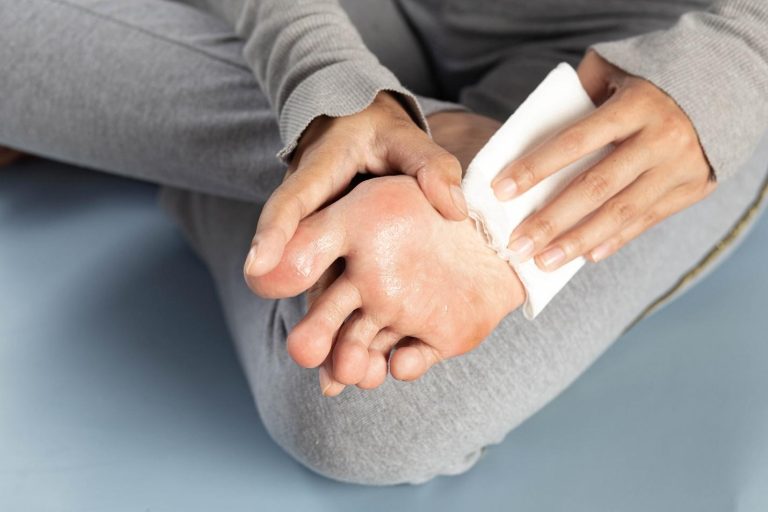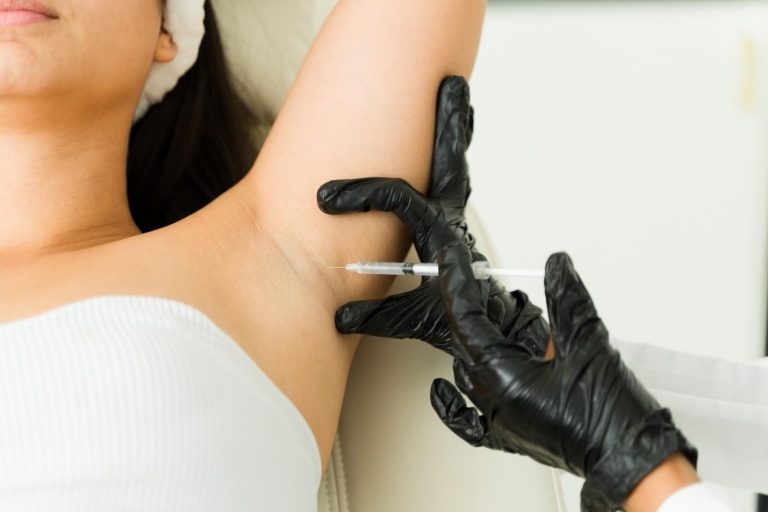

Sweating is a normal bodily function that helps regulate temperature. However, for some individuals, excessive sweating occurs regardless of temperature or physical activity. This condition, known as hyperhidrosis, affects daily life, causing discomfort, and social anxiety. Fortunately, various treatments are available to help manage excessive sweating effectively.
Hyperhidrosis is a medical condition characterised by excessive sweating that goes beyond what is necessary for temperature regulation. It can affect different parts of the body, including the palms, soles, underarms, and face. This condition is typically caused by overactive sweat glands, leading to persistent sweating – even when at rest.
Hyperhidrosis is categorised into two main types, which are:
The overstimulation of the sweat glands, due to the influence of the nervous system, is typically the cause of hyperhidrosis. Be that as it may, the causes can be divided into two categories:

Some of the common symptoms of hyperhidrosis are:
Beyond physical discomfort, hyperhidrosis can significantly impact daily life, and mental well-being:
The eccrine glands are responsible for producing sweat. As it exists in the skin throughout the body, symptoms of hyperhidrosis can occur anywhere, with the following areas being the primary areas:
When it comes to hyperhidrosis, it is important to manage the triggers. There are certain factors that can worsen hyperhidrosis episodes, including:

Diagnosing hyperhidrosis involves a thorough evaluation to determine the type, severity, and potential underlying causes of excessive sweating. At Livingstone Dermatology, our dermatologists begin with a detailed consultation, and physical examination.
During the initial consultation, our dermatologists will assess your symptoms through:
In addition to a physical examination, our dermatologists may recommend specific tests to confirm the diagnosis, and assess the severity of the condition:
Treatment for hyperhidrosis is primarily focused on managing the condition, and preventing it from exacerbating. As such, it includes a variety of treatment options, ranging from conservative measures to more invasive forms of medical intervention – all of which are tailored specifically to each patient.
For mild to moderate hyperhidrosis, conservative methods can help manage excessive sweating:

For moderate to severe hyperhidrosis, medical treatments offer longer-lasting relief:
For severe hyperhidrosis that does not respond to other treatments, surgical interventions may be considered:
Excessive sweating can be disruptive, and challenging to manage on your own. Thankfully, there are several medical-grade treatments that can help you manage hyperhidrosis symptoms effectively.
Schedule a consultation today for a detailed diagnosis and personalised treatment plan.
Normal sweating occurs as a natural response to heat, physical activity or emotional stress, helping to regulate body temperature. It usually stops once the triggering factor subsides.
Excessive sweating, on the other hand, happens regardless of external conditions, and can interfere with daily activities. The key differences include:
Hyperhidrosis affects approximately 2 – 3% of the global population, with many cases remaining undiagnosed or untreated. This is largely due to a lack of awareness, and education related to the condition.
Most people with hyperhidrosis do not experience body odour. However, to prevent body odour (bromhidrosis), you can:
There is no conclusive evidence linking regular use of these products to breast cancer. Many formulations, including natural and clinical-strength options, are available, allowing individuals to choose what suits them best.
It is important to seek medical attention for hyperhidrosis to prevent the following potential complications:
Although treatment-related side effects are uncommon, it is important to be aware of the potential side effects. These side effects depend on the treatment method, but may include:
It is important to understand that most treatments provide temporary relief. As such, it requires repeated sessions or long-term management. However, surgical options may offer a permanent solution, but they do come with their own set of risks.
While hyperhidrosis itself may not be preventable, triggers can be managed through lifestyle adjustments, appropriate treatments.
Yes, some lifestyle adjustments can help. This includes:
Living with hyperhidrosis can be challenging, but effective treatment options are available. Our experienced dermatologist will work with you to develop a personalized treatment plan that addresses your specific concerns and provides lasting relief.
Whether you’re dealing with a specific skin concern or seeking to enhance your natural beauty, Livingstone Dermatology is here to guide you on your journey to healthy, radiant skin.
Schedule an appointment today and experience the Livingstone standard of care in a welcoming, professional environment.